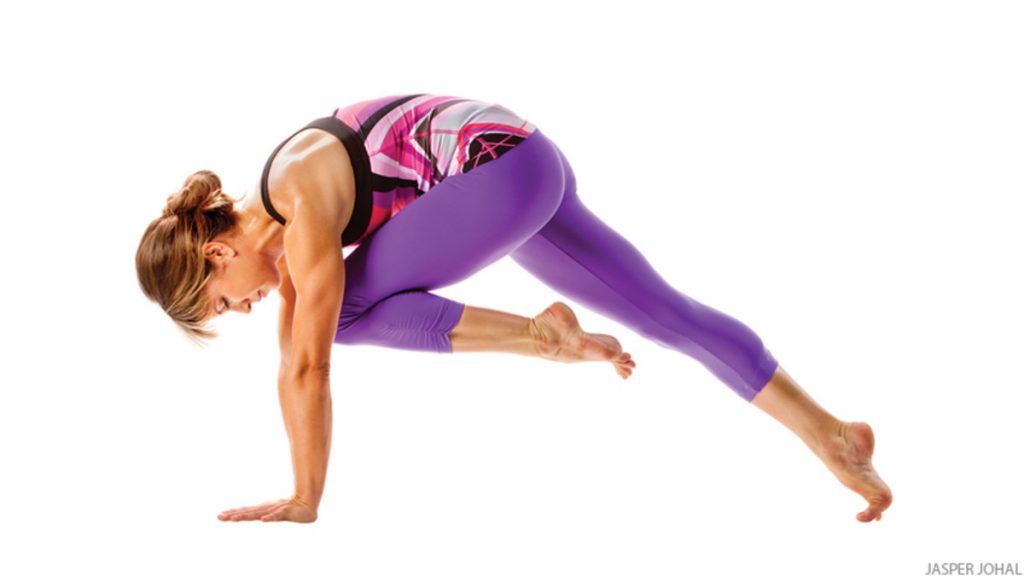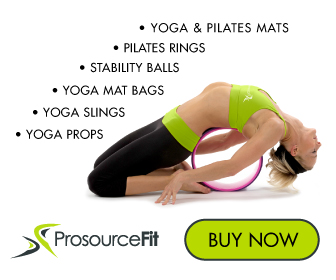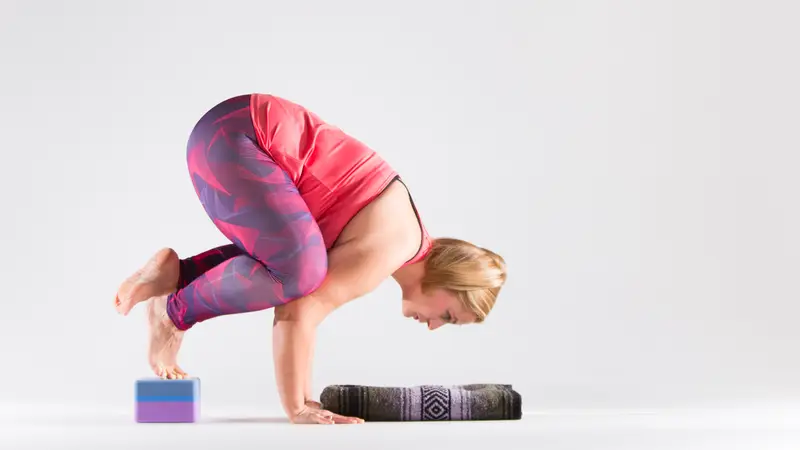Bakasana, or Crow Pose, is a fun and challenging pose that works your arms, abdominals, and hips. It is also one of the more foundational arm balances, and helps prepare you for more complex ones. Here’s how to do crow pose for beginners:
From Malasana, take your hands down onto your yoga mat. Firm up the palms and grip your fingers on to the mat, until you feel your forearms and upper arms engage. Squeeze your knees into your triceps, until you feel your thighs clip into your elbows. Round your upper back and engage your abdominals.
Start to lean forward and slowly shift your weight to your arms. Lift your heels and come high onto the balls of the feet. Continue to round your spine, clip your thighs in, and push the ground away with the arms.
When you are ready, lift the right foot off the ground. Set it down. Lift the left foot off the ground. Set it down. Lift the right foot off again, keep it floating up, then try to lift the left foot off and keep both feet afloat. Stay here for a few breaths, then set the feet down and come back into your low squat.
Crow Pose Benefits
- It strengthens the abdominals.
A key feature of crow pose is the flexion (or slight rounding) that happens in the spine. This helps you maintain a strong lift in the arm balance, as it activates your rectus abdominis, the long muscle of the anterior abdominal wall.
- It challenges your upper body.
Arm balances like crow pose require that you actively push against the ground. The pose works and strengthens your wrists, arms, and even chest muscle.

- It enhances body awareness.
The connection between your lower body and your upper body is essential in any arm balance, and this should be understood in crow.
Your thighs must actively clip against your arms, in order to achieve a light, compact shape that can take flight. Your feet must lift off the ground and towards your buttocks.
And while all of this is happening, maintaining active flexion in the spine and abdominal engagement helps you stay stable in the pose. It sounds like a lot of things happening all at once—but with practice, you can do it!
- It builds focus and concentration.
It’s a challenging pose, which is why it encourages you to really focus! Don’t forget to breathe and keep your gaze focused at an unmoving point in front of you—this will help you keep balanced and hold the shape longer.

Crow Pose Tips
- Focus on foundational poses.
If you’re still building towards your bakasana, try to work on foundational poses to help strengthen your arms, abdominals, and hips.
Your plank, for example, is the blueprint for arm balances. Try refining your chaturanga as well, ensuring that you keep your thighs and glutes engaged and squeezing your triceps into your midline.

- Use your props.
Using yoga blocks could help your body gain a better understanding of the shape. Try perching your feet onto blocks, to give you additional height and help you lean your lower body against your arms.
If you’re scared of falling over, use a block or a pillow to help cushion your forehead when you lean forward. Get creative, and explore how these props can help you progress!

- Keep your gaze focused.
In crow pose, the tendency for many yogis is to look down. This will only make you feel more afraid of falling.
Instead, try looking towards the top edge of your mat and focusing your gaze there. The gaze is so important in balancing postures—whether it’s a standing balancing pose, or an arm balance.



